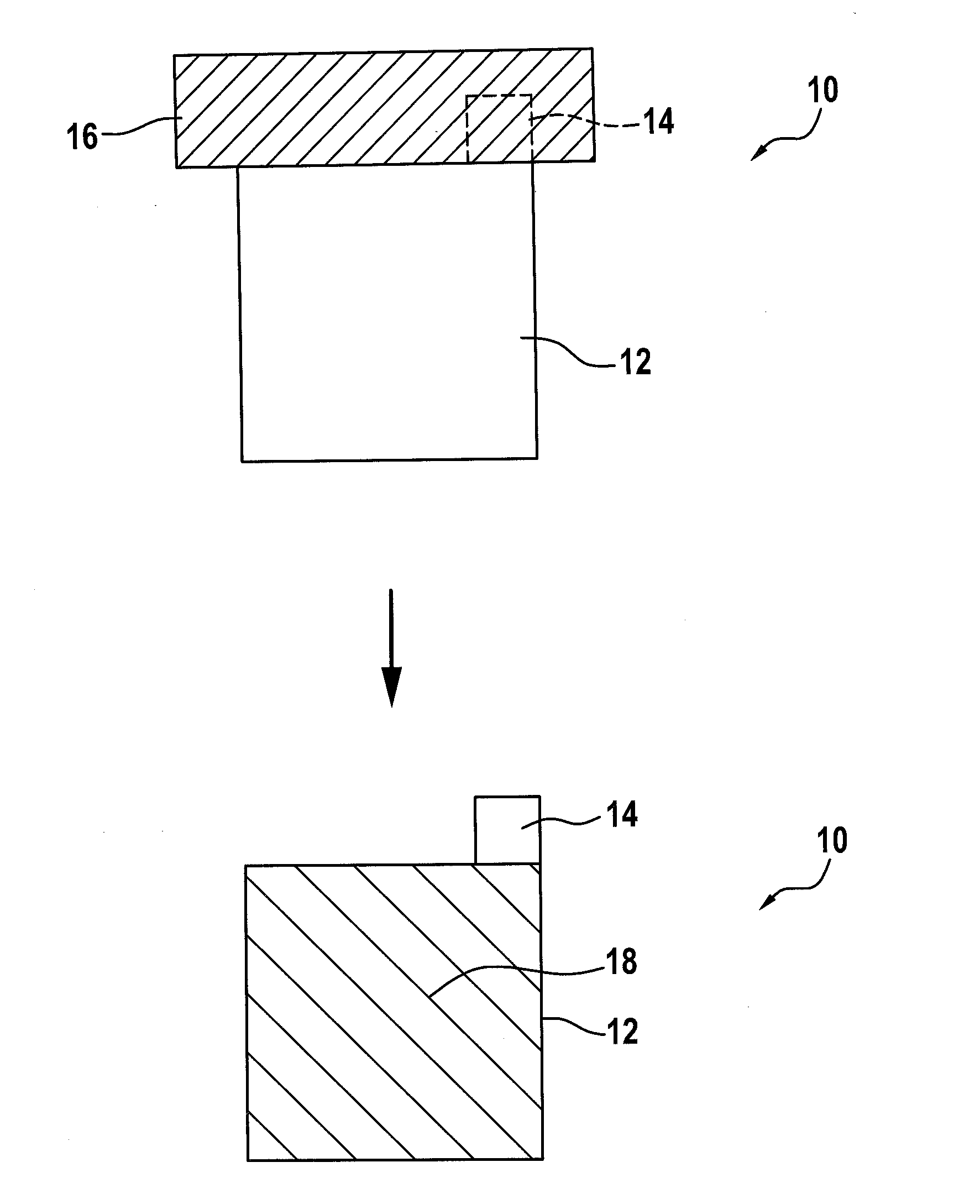Electrode and method for manufacturing an electrode
a manufacturing method and electrode technology, applied in the field of electrodes, can solve the problems of not being able to prevent the negative effect of the electrode structure during shaping, and the so as to achieve long-lasting and reliable electrode operation, high energy yield, and the effect of reducing the negative influence of the later operation or the possible performance of the electrod
- Summary
- Abstract
- Description
- Claims
- Application Information
AI Technical Summary
Benefits of technology
Problems solved by technology
Method used
Image
Examples
Embodiment Construction
[0032]A method step for manufacturing an electrode 10 is shown in FIG. 1. In particular, the step of coating current collector 12 with an active material mixture is shown in FIG. 1. Such an electrode 10 may be part of a lithium ion battery, for example, and may be used, as such, in both consumer electronics and electrically powered vehicles.
[0033]In this context, it is apparent from FIG. 1 that current collector 12, which may be, for instance, a current collector foil, may be preformed, in particular, prior to applying the active material mixture, by cutting or stamping, for instance. Furthermore, a current pick-up 14, such as a current pick-up flag, may be positioned on current collector 12.
[0034]In this context, shown in FIG. 1 is the application of the, in particular, solvent-containing, active material mixture to at least a partial region of current collector 12, to form an active material layer 18. This may be carried out, using screen printing, printing, spraying, or using a s...
PUM
| Property | Measurement | Unit |
|---|---|---|
| current | aaaaa | aaaaa |
| porosity | aaaaa | aaaaa |
| concentration | aaaaa | aaaaa |
Abstract
Description
Claims
Application Information
 Login to View More
Login to View More - R&D
- Intellectual Property
- Life Sciences
- Materials
- Tech Scout
- Unparalleled Data Quality
- Higher Quality Content
- 60% Fewer Hallucinations
Browse by: Latest US Patents, China's latest patents, Technical Efficacy Thesaurus, Application Domain, Technology Topic, Popular Technical Reports.
© 2025 PatSnap. All rights reserved.Legal|Privacy policy|Modern Slavery Act Transparency Statement|Sitemap|About US| Contact US: help@patsnap.com


